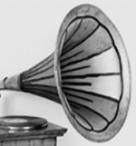Hi all,
I'm using a single ended tube amp (wil EL 84) for the mid-high section of my system, turning this on is nice and smooth, but I get an awful transient burst when I turn the thing off. I've tried cleaning the switch contacts, it does not help. Now, I'm turning it on an doff by removing the mains plug, which is a little better but still gives a fairly loud transient. Is there anything that could be done to help moderate or eliminate this? Is there a possibility that it is due to the switch only and a replacement would be better than a cleaning? The amp is a second hand purchase, so I have no clue if it was doing the same when new.
Thanks



 Reply With Quote
Reply With Quote







